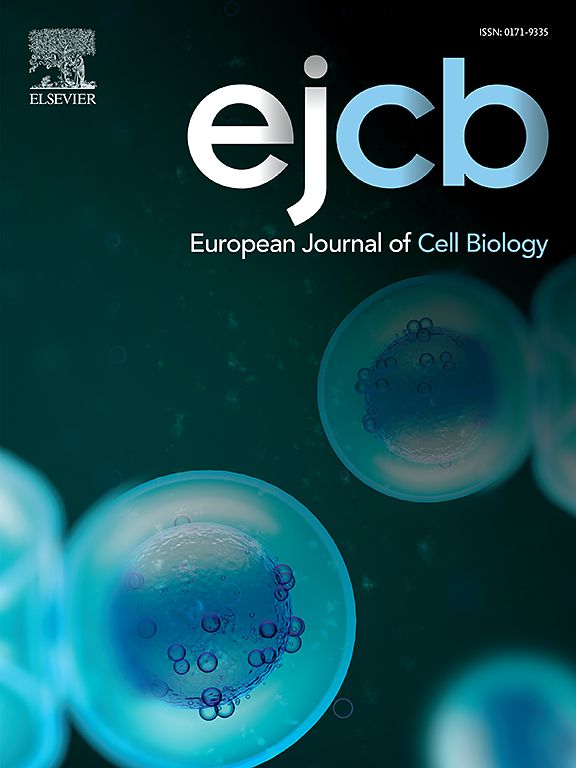A physiologically relevant blood–cerebrospinal fluid barrier model to study the permeability of neurodegenerative biomarkers
IF 4.3
3区 生物学
Q2 CELL BIOLOGY
引用次数: 0
Abstract
The blood–cerebrospinal fluid barrier (BCSFB) is formed by the choroid plexus and represents the interface between the blood and cerebrospinal fluid (CSF). Several in vitro models have been developed to establish an active cellular barrier and to study the functional and molecular properties of the BCSFB. These models are suitable for simulating disease processes and evaluating drug permeability into brain tissue. Here we have established and optimized a protocol for the high-yield isolation of primary epithelial cells from rat choroid plexus. The addition of cytosine arabinoside suppressed the growth of contaminating cells (fibroblasts and astrocytes), and epithelial culture was grown into a confluent impermeable monolayer within 5–6 days after seeding. To characterize functional and structural properties of our BCSFB model, we employed immunocytochemical and biochemical techniques. Using this model, we assessed the permeability of small molecules as well as proteins associated with neurodegenerative disorders, including tau protein and neurofilament light chain (NfL). The cells were able to secrete cerebrospinal fluid (CSF) actively and the epithelial secretome was enriched in growth factors, cell-matrix proteins, proteases, carrier proteins, and inflammation-related proteins. The novelty of our model lies in its ability to mimic the structural and functional characteristics of the BCSFB while also expressing transporters that are important for pharmaceutical research. The model is suitable for in vitro investigations of the BCSFB, preclinical drug discovery, and for studying the mechanisms by which CNS biomarkers cross from the CSF to the blood during disease.
研究神经退行性生物标志物通透性的生理相关血-脑脊液屏障模型
血-脑脊液屏障(BCSFB)由脉络膜丛形成,代表血液和脑脊液(CSF)之间的界面。已经建立了几个体外模型来建立活性细胞屏障,并研究BCSFB的功能和分子特性。这些模型适用于模拟疾病过程和评估药物对脑组织的渗透性。本研究建立并优化了一种高效分离大鼠脉络膜丛原代上皮细胞的方法。添加阿拉伯糖胞嘧啶抑制了污染细胞(成纤维细胞和星形胶质细胞)的生长,上皮培养物在播种后5-6天内生长成融合的不渗透单层。为了表征BCSFB模型的功能和结构特性,我们采用了免疫细胞化学和生化技术。使用该模型,我们评估了小分子以及与神经退行性疾病相关的蛋白质的通透性,包括tau蛋白和神经丝轻链(NfL)。这些细胞能够积极分泌脑脊液(CSF),上皮分泌组富含生长因子、细胞基质蛋白、蛋白酶、载体蛋白和炎症相关蛋白。我们的模型的新颖之处在于它能够模拟BCSFB的结构和功能特征,同时也表达对药物研究很重要的转运蛋白。该模型适用于BCSFB的体外研究,临床前药物发现,以及研究疾病期间CNS生物标志物从CSF进入血液的机制。
本文章由计算机程序翻译,如有差异,请以英文原文为准。
求助全文
约1分钟内获得全文
求助全文
来源期刊

European journal of cell biology
生物-细胞生物学
CiteScore
7.30
自引率
1.50%
发文量
80
审稿时长
38 days
期刊介绍:
The European Journal of Cell Biology, a journal of experimental cell investigation, publishes reviews, original articles and short communications on the structure, function and macromolecular organization of cells and cell components. Contributions focusing on cellular dynamics, motility and differentiation, particularly if related to cellular biochemistry, molecular biology, immunology, neurobiology, and developmental biology are encouraged. Manuscripts describing significant technical advances are also welcome. In addition, papers dealing with biomedical issues of general interest to cell biologists will be published. Contributions addressing cell biological problems in prokaryotes and plants are also welcome.
 求助内容:
求助内容: 应助结果提醒方式:
应助结果提醒方式:


